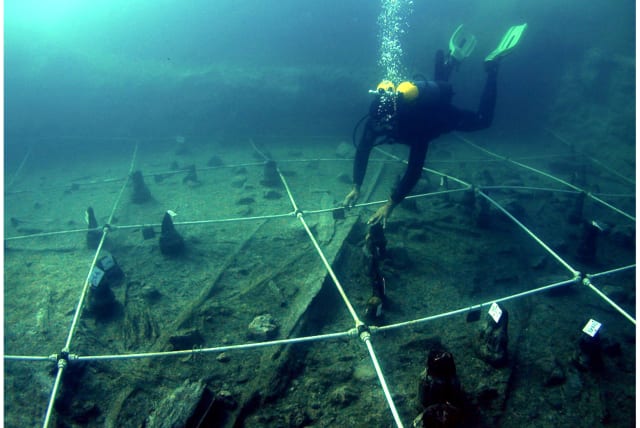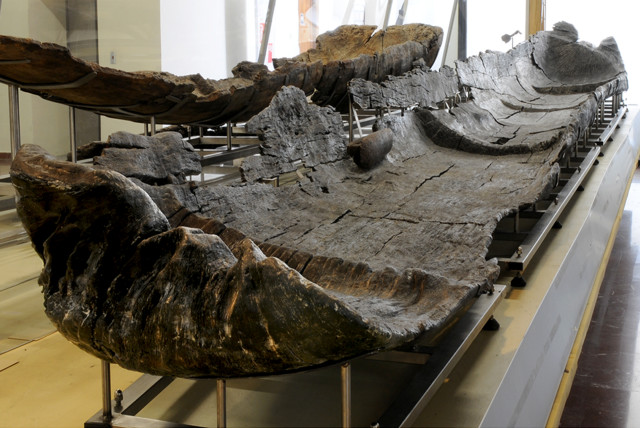Neolithic boats that traversed the Mediterranean 7,000 years ago excavated near Rome

Excavations of canoes at the Neolithic lakeshore village of La Marmotta, near Rome, Italy provided new insights into the history of seafaring technology.
Boats have been used to carry people in the Mediterranean Sea not only in the last few centuries. In fact, people on sophisticated boats navigated this body of water for more than 7,000 years.
Excavations of canoes at the Neolithic lakeshore village of La Marmotta, near Rome, Italy brought evidence of this, providing new insights into the history of seafaring technology. A study on the subject by Juan Francisco Gibaja of the Spanish National Research Council, Barcelona and colleagues has just been published in the journal PLOS ONE under the title “The first Neolithic boats in the Mediterranean: The settlement of La Marmotta.”
This technology was an essential part in the success of their expansion, bearing in mind that in a few millennia they occupied the whole Mediterranean from Cyprus to the Atlantic seaboard of the Iberian Peninsula. The authors stated that clearly, the Mediterranean Sea must have often been used for travel, as boats allowed rapid movements of population, contacts, and exchange of goods. Several researchers have already suggested that the first farming communities must have travelled by sea on short voyages following the coastline.
“Direct dating of Neolithic canoes from La Marmotta shows them to be the oldest in the Mediterranean, offering invaluable insights into Neolithic navigation,” they wrote. This study reveals the amazing technological sophistication of early agricultural and pastoral communities, highlighting their woodworking skills and the construction of complex vessels.”
Many of the most important civilizations in Europe originated on the shores of the Mediterranean Sea. During the Neolithic, communities clearly traveled and traded across the water, as evidenced by watercraft in the archeological record and the presence of settlements on coasts and islands.
Canoes were made from four different types of wood
The excavation recovered five canoes built from hollowed-out trees (dugout canoes) dating between 5700 BCE to 5100 BCE. Analysis of these boats reveals that they were built from four different types of wood, which is unusual compared to similar sites. Although at that time the canoes were usually made from pine trunks, other species were used, such as poplar, oak, alder, and lime. They also found the boats include advanced construction techniques such as transverse reinforcements.
One canoe is also associated with three T-shaped wooden objects, each with a series of holes that were likely used to fasten ropes tied to sails or other nautical elements. These features, along with previous reconstruction experiments, indicate these were seaworthy vessels, a conclusion supported by the presence at the site of stone tools linked to nearby islands.
The authors said the canoes were exceptional examples of prehistoric boats whose construction required a detailed understanding of structural design and wood properties and well-organized specialized labor. Similarities between these canoes and more recent nautical technologies support the idea that many major advances in sailing were made during the early Neolithic period. The authors suggest there may be more boats preserved near La Marmotta, which would be a potential avenue for future research.
Jerusalem Post Store
`; document.getElementById("linkPremium").innerHTML = cont; var divWithLink = document.getElementById("premium-link"); if (divWithLink !== null && divWithLink !== 'undefined') { divWithLink.style.border = "solid 1px #cb0f3e"; divWithLink.style.textAlign = "center"; divWithLink.style.marginBottom = "15px"; divWithLink.style.marginTop = "15px"; divWithLink.style.width = "100%"; divWithLink.style.backgroundColor = "#122952"; divWithLink.style.color = "#ffffff"; divWithLink.style.lineHeight = "1.5"; } } (function (v, i) { });

